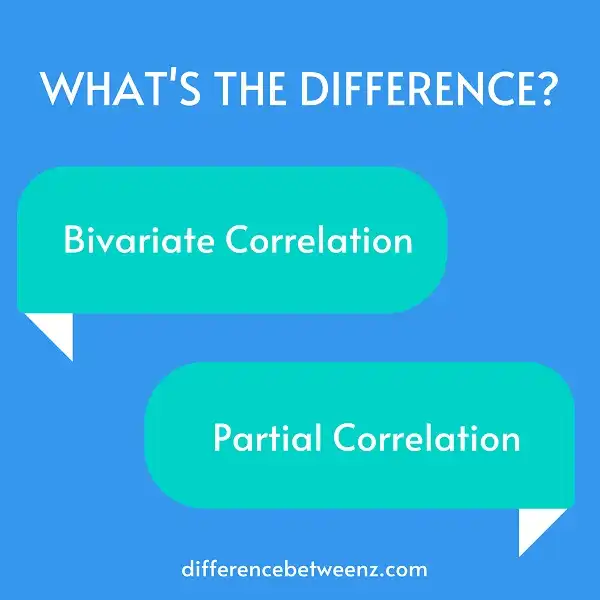In statistics and quantitative research, bivariate correlation is a measure of the strength and direction of a linear relationship between two variables. Partial correlation, on the other hand, is used to determine the degree of association between two variables while controlling for the effects of a third variable. In this post, we will discuss the differences between bivariate and partial correlation, and when each should be used.
What is Bivariate Correlation?
Bivariate correlation is a statistical measure that assesses the strength and direction of the relationship between two variables. This type of correlation is used when there are two sets of data that are believed to be related.
- For example, if researchers wanted to study the relationship between test anxiety and test performance, they would use bivariate correlation. Bivariate correlation can be either positive or negative. A positive relationship means that as one variable increases, the other variable also increases.
- For example, there would be a positive relationship between hours of studying and test performance. A negative relationship means that as one variable increases, the other variable decreases.
- For example, there would be a negative relationship between test anxiety and test performance. Bivariate correlation can be used to predict future behavior. However, it is important to remember that correlation does not necessarily mean causation.
Just because two variables are correlated does not mean that one variable is causing the other. Bivariate correlation is a valuable tool for researchers as it allows them to examine the relationships between two variables. However, it is important to interpret the results of bivariate correlation cautiously in order to avoid making incorrect conclusions.
What is Partial Correlation?
Partial correlation is a statistical method used to measure the strength of a linear relationship between two variables while controlling for the presence of other variables. In other words, it allows you to isolate the relationship between two variables while holding all other variables constant. Partial correlation is particularly useful when you want to know how two variables are related while controlling for the effects of other variables.
For example, you might want to know how income and education are related, but you might also want to control for the effects of age or gender. Partial correlation can help you to isolate the relationship between these two variables while holding other variables constant. Partial correlation is a powerful statistical tool that can be used to better understand the relationships between variables.
Differences between Bivariate and Partial Correlation
Bivariate correlation is a statistical method used to measure the relationship between two variables. Partial correlation, on the other hand, is a statistical technique used to measure the relationship between two variables while controlling for the effects of one or more other variables. In other words, partial correlation allows you to isolate the relationship between two specific variables while taking into account the influence of other variables. As a result, bivariate and partial correlation are two very different statistical methods that are used to measure different types of relationships.
Conclusion
In conclusion, bivariate correlation is a measure of the linear relationship between two variables while partial correlation removes the effect of a third variable. Partial correlation is more powerful than bivariate correlation and can be used to determine the strength of the relationship between two variables while controlling for the effects of other variables.


